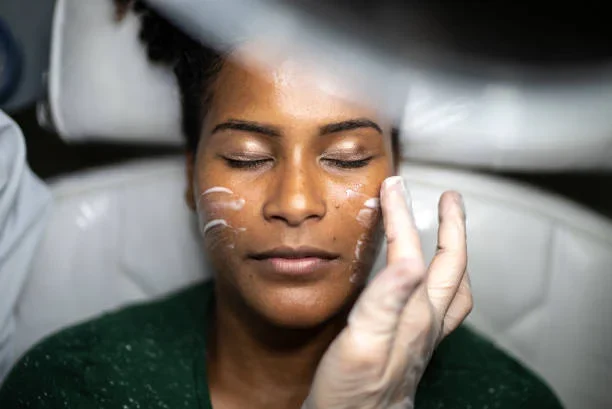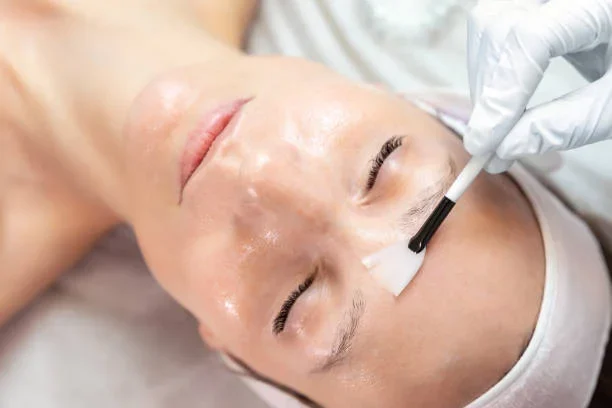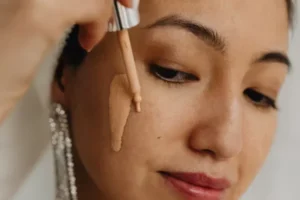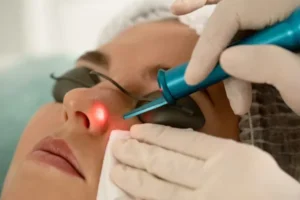Disclaimer: The information provided in this article is for general informational purposes only and is not intended as medical advice. Always consult with a healthcare professional or dermatologist before starting any new skincare treatments or products.
Introduction
In the fast-paced world we live in, maintaining healthy skin can often feel like a daunting task. However, exfoliating peels offer a convenient and effective solution for those on the go. These peels play a crucial role in skincare by removing old skin cells, revealing a fresher and more radiant complexion beneath. With their easy application and quick results, dermal exfoliators have become a popular choice for individuals with busy lifestyles.
What are Exfoliating Peels?
Exfoliating peels are skincare products designed to remove old skin cells from the surface of the skin. They typically contain active ingredients like alpha hydroxy acids (AHAs) or beta hydroxy acids (BHAs) that work to break down the glue that holds skin cell debris. This process not only helps in removing dull and flaky skin but also promotes the regeneration of new skin cells.
Here are some key benefits of dermal exfoliators:
- Improved Skin Texture: Regular use can smooth rough patches and enhance overall skin texture.
- Brighter Complexion: By removing old skin, peels reveal a more colorful and even skin tone.
- Better Absorption: With old skin out of the way, your other skincare products can penetrate more effectively.
According to Harvard Health, regular exfoliation is important for maintaining healthy skin, as it helps to clear clogged pores and prevent acne, among other benefits.
Choosing the Right Face Peel Exfoliator

Choosing the right Radiance exfoliator can significantly enhance your skincare routine. With various options available, it’s essential to choose one that suits your skin type and meets your needs. Here’s a guide to help you make the best choice:
Types of Face Peel Exfoliators:
There are several types, including chemical peels, enzyme peels, and physical exfoliators. Chemical peels use common acids like glycolic or salicylic acid to dissolve skin cell debris. Enzyme peels use natural enzymes to gently exfoliate the skin, while physical exfoliators use small particles to scrub away dead skin.
Skin Type Consideration:
- Oily Skin: Opt for a peel with salicylic acid to help control oil and prevent breakouts.
- Dry Skin: Look for hydrating ingredients like lactic acid that gently exfoliate while providing moisture.
- Sensitive Skin: Choose enzyme peels or products with calming ingredients like chamomile to avoid irritation.
Expert Recommendations:
According to experts, products that balance effectiveness with gentleness are ideal. For more detailed advice, you can refer to NBC News.
Quick and Easy: The One Minute Peel

For those with a hectic schedule, a one-minute peel offers a quick and effective solution to get glowing skin. Here’s how you can incorporate it into your routine:
What is a One Minute Peel?
This is a fast-acting exfoliating treatment designed to refresh your soft layer in just 60 seconds. It’s ideal for busy individuals seeking a quick, effective skincare solution.
How to Use:
- Cleanse Your Face: Start with a clean face to ensure it works effectively.
- Apply the Peel: Put a thin layer on your facial skin, avoiding the eye area.
- Wait and Rinse: Leave it on for one minute, then rinse off with lukewarm water.
Benefits:
This quick routine helps remove skin cell debris, leaving your dermis smooth and glowing with minimal time commitment.
By choosing the right exfoliator, such as the InstantPeel Exfoliant, and incorporating a one-minute peel into your routine, you can maintain healthy, vibrant skin even on the go. These tips ensure you make the most of your skincare, no matter how busy life gets.
Understanding Dead Skin Face Peel
A dry skin face peel is a type of exfoliating treatment that helps to remove the top layer of old cells from your facial skin. Unlike other exfoliating methods, such as scrubs that use physical abrasion, peels typically use chemicals to dissolve the bonds holding skin cell debris together. This process allows for the easy removal of these cells, revealing a fresher, more radiant layer of skin underneath.
How to Use a Dead Skin Peel for Face

Using a dead skin peel for your face can be a simple process if done correctly. Here’s a step-by-step guide to help you use it safely and effectively:
- Cleanse Your Face: Start by washing your facial skin with a gentle cleanser to remove any makeup, dirt, or oil. Pat your epidermis dry with a clean towel.
- Apply the Peel: Using clean fingers or a brush, apply a thin, even layer of the dry peel to your face, avoiding the sensitive areas around your eyes.
- Follow the Instructions: Leave it on for the recommended amount of time as per the product’s instructions. This can vary from a few minutes to longer, depending on the peel’s strength.
- Rinse Off: Once the time is up, rinse your facial skin thoroughly with lukewarm water. Be gentle and avoid scrubbing your dermis.
- Moisturize: After drying your facial skin, apply a moisturizer to hydrate your epidermis and help maintain its new, smooth texture.
Here are some additional tips for using a Dry skin peel:
- Frequency: Use it as recommended, typically once or twice a week, to avoid over-exfoliation.
- Patch Test: If you are trying a new product, do a patch test on a small area of skin to ensure you do not have a reaction.
- Sun Protection: After using a peel, your epidermis can be more sensitive to sun exposure. Apply sunscreen to protect your dermis.
For more detailed guidance on integrating peels into your skincare routine, you can check out this guide by Healthline.
Integrating Exfoliating Skin Peel into Your Routine
Incorporating an exfoliating peel into your dermis routine can be a game-changer for achieving a glowing complexion. Regular use helps to remove dry cells, allowing for better absorption of other skincare products and promoting healthier skin.
Here are some tips to effectively integrate Skin-renewing peels into your routine:
- Start Slowly: If you’re new to dermal exfoliators, begin by using them once a week. Gradually increase the frequency as your dermis adjusts.
- Pair with the Right Products: Use gentle cleansers and moisturizers to complement it.
- Listen to Your Skin: Pay attention to how your epidermis responds. If you notice irritation, reduce the frequency or switch to a milder peel.
- Sun Protection: Always apply sunscreen after using a peel, as your epidermis will be more sensitive to sunlight.
By integrating dermal exfoliators into your routine, you can enjoy smoother, more radiant skin over time.
Conclusion
Skin-renewing peels offer a convenient and effective way to maintain healthy skin, especially for those with busy lifestyles. By choosing the right products and incorporating them into your skincare routine, you can enjoy the many benefits they offer, such as improved skin texture and a brighter complexion.
Remember to select the appropriate radiance exfoliator for your epidermis type and gradually introduce it into your routine. With regular use, dermal exfoliators can help you achieve and maintain glowing skin.












